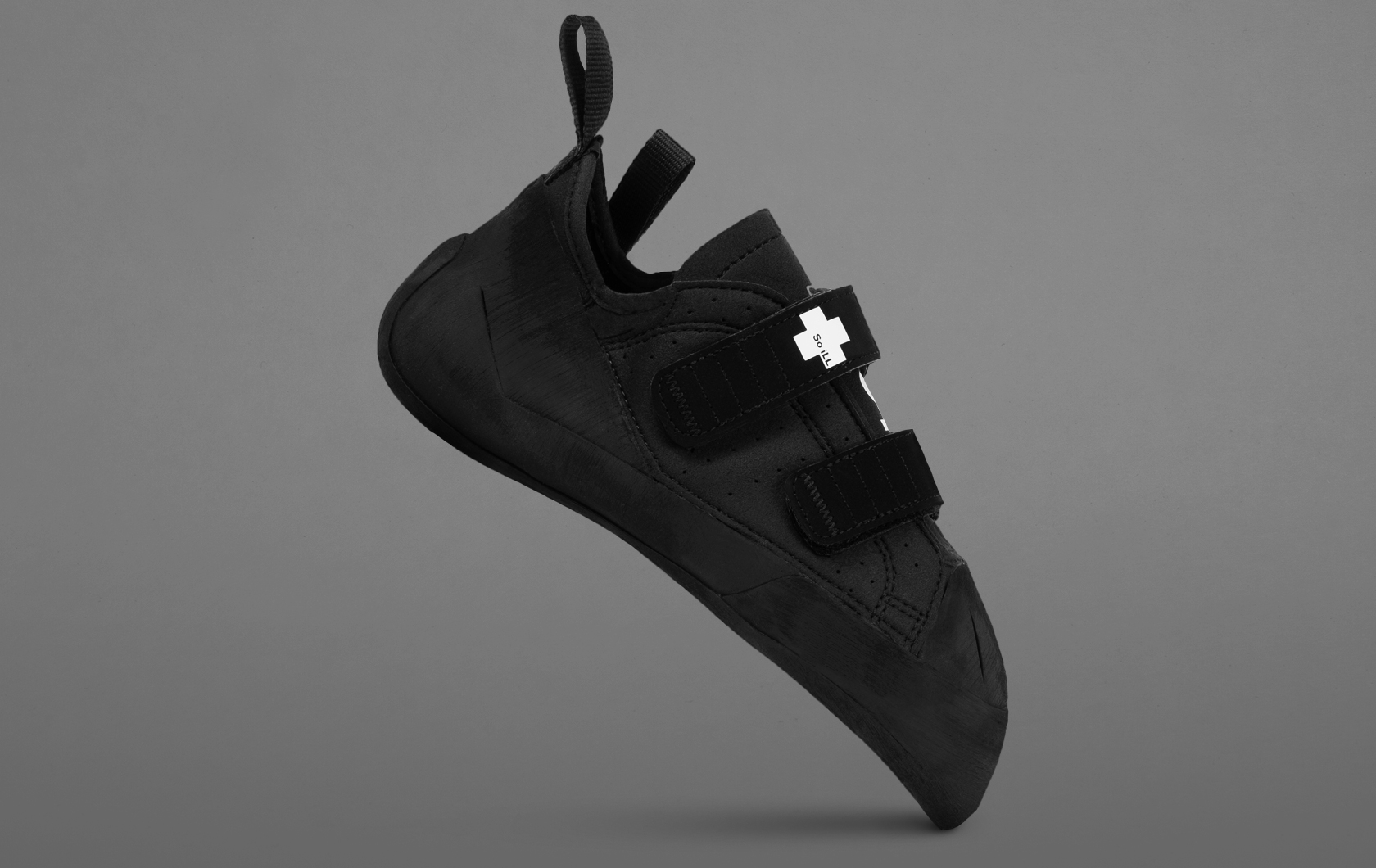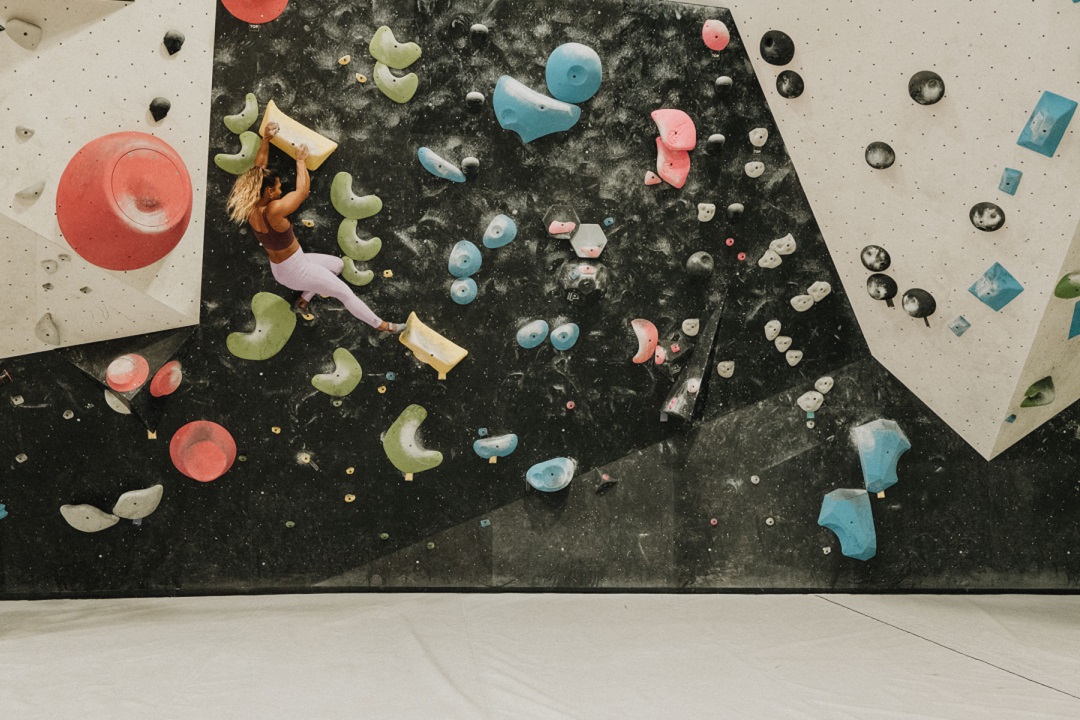David Chancellor, one of the founders of So iLL, which designs and sells climbing holds, shoes, and other gear, started climbing when he was a teenager. At the time, the sport was fringe. Many years later, St. Louis is home to multiple climbing gyms, local university clubs are booming, and nearby outdoor climbing spots are gaining recognition among those in the know.
In other words, climbing in St. Louis is having a moment.
If you’re one of the newer converts to the sport and looking to purchase your first pair of shoes, the task ahead can be daunting. Here’s a guide to get you started.
Types of Climbing Shoes
There are three broad categories of climbing shoes: neutral, moderate, and aggressive.
- Neutral shoes are good for beginners, as well as vertical and slab climbs. They’re softer, so they tend to be more comfortable but are also not ideal for tackling more difficult routes.
- Moderate shoes are slightly downturned — less comfortable but designed for technical routes.
- Aggressive shoes are the least comfortable option, but their more extreme downturned shape and stiffness makes them best for technical climbs featuring overhangs or tricky bouldering.
Options, Options, Options
While the shape of the shoe is your most important consideration, there are lots of options within each category for closure system, upper material, and sole thickness and stickiness.
The shoe’s closure system can use laces or Velcro, or can be a slip-on. Laces help you get a secure fit, Velcro can be convenient if you take your shoes on and off during climbs, and slip-ons tend to be very thin, better for pros.

St. Louis’ So iLL makes climbing shoes and gear.
You also need to think about the shoe’s material. Leather is common but can stretch a full size — definitely keep that in mind when you’re trying shoes on. Synthetic shoes don’t stretch. Hybrid, usually a combo of materials, will stretch wherever there’s leather.
Finally, the soles: Thicker soles offer durability while thinner ones give you more flexibility. Stickier rubber is good for technical routes but has less durability than harder rubber. Harder rubber, on the other hand, can be a great tool for holding an edge on steep routes.
Consider Your Climbing Style
Climbing shoes are a tool that can help you improve. Beyond the type of climbing you do today, what are you hoping to be able to climb in the future? Are you climbing indoors or venturing outdoors, too? Are you tackling edging, overhangs, or slabs?
“Decide on your climbing journey before you pick your type of shoe. Remember you can always grow into the shoe if you’re hoping to tackle more difficult terrain,” Chancellor said.
That said, for your first purchase, an all-around neutral shoe is probably your best bet. “If you’re just starting out, you’ll want a basic, comfortable climbing shoe,” Chancellor said. “Over time, you’ll see where the holes are in your climbing and what kind of shoes you need to consider purchasing to fill out your kit. Most pros carry a few different options.”
Size Definitely Matters
The most common mistake climbing shoe novices make is in sizing. Shoes should be snug and secure, without dead space for your feet to slip around during climbs. But beginners, Chancellor says, often go too snug, then find climbing is uncomfortable.
“Ultimately, climbing should be fun, whether you’re a beginner or seasoned pro,” he said. “Most beginners want to be able to wear their shoes the whole time they’re climbing, even if they’re standing around, while more experienced climbers tend to go for tighter shoes and will only wear them when climbing, switching to something like sandals when resting. If it’s too comfy, you’re losing performance.”
When trying shoes on, remember you’ll have to take some time to break them in — usually a handful of climbs. If you have the option, leave them on for several minutes before you make a final decision to get a better feel for whether they’re just-right snug or are going to cause you pain, souring your climbing experience.
Go to the Experts
Chancellor recommends visiting a local climbing shoe shop for help finding the right-sized pair that will work for your needs. Plus, by visiting a store versus trying to buy a pair online, you can try on many different models.
So iLL’s retail shop at 2008 Marconi Avenue in St. Louis, for example, is also its warehouse, so shoppers can try on anything the brand carries.
Next year, So iLL will be launching a brand-new line of climbing shoes and will expand its eco-friendly So iLL x On The Roam line, created in collaboration with brand ambassador and actor Jason Momoa.
Wherever you get your shoes, consider it an investment in climbing that will pay dividends. “This is one piece of equipment that actually elevates your performance and can make the experience more fun,” Chancellor said. “It’s absolutely worth taking the time to find the right shoe and the right fit.”
Author: Stephanie Zeilenga is a regular contributor to Terrain Magazine.
Top Image: Bouldering at Climb So iLL in St. Charles, Missouri.


Leave A Comment